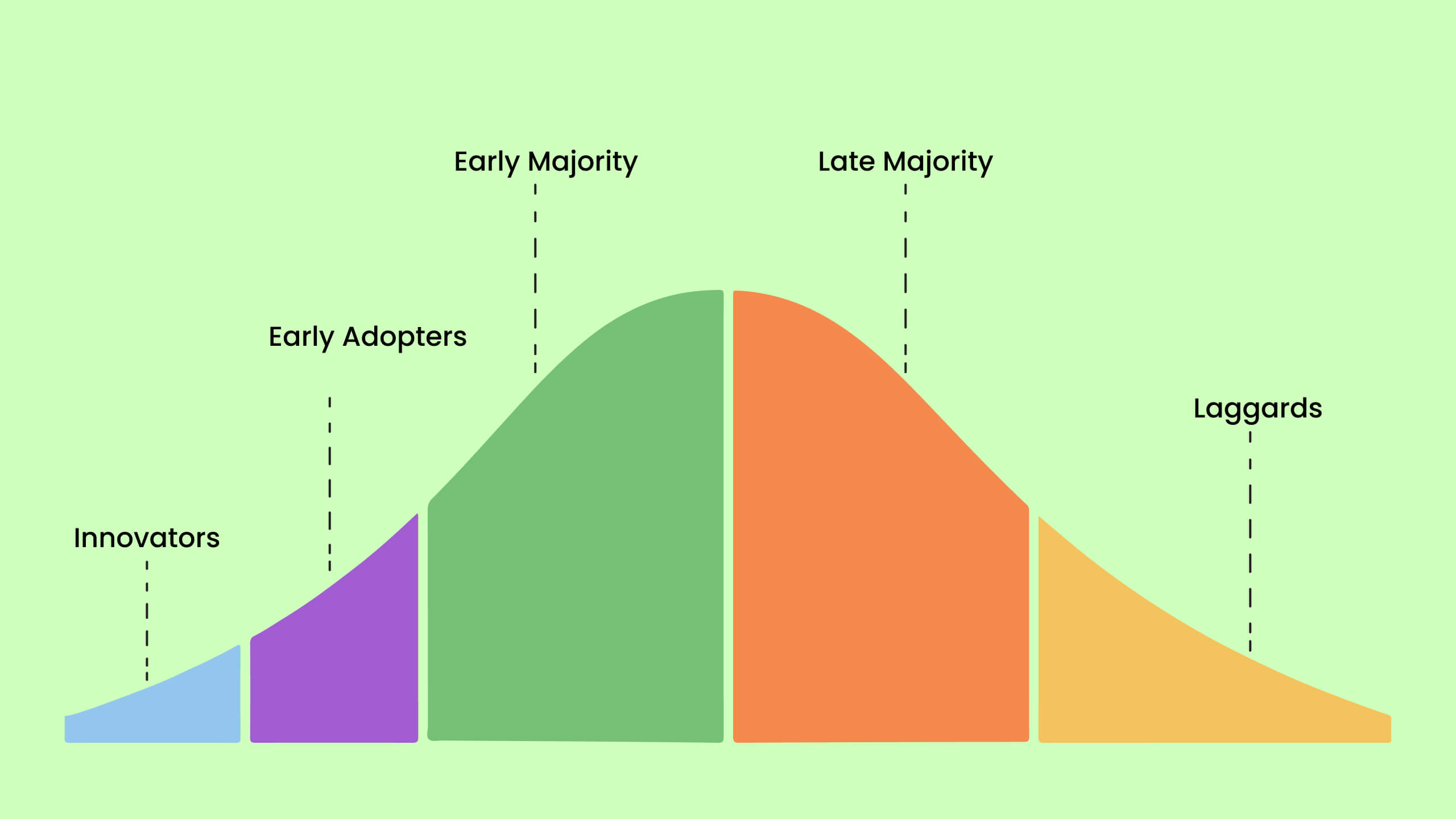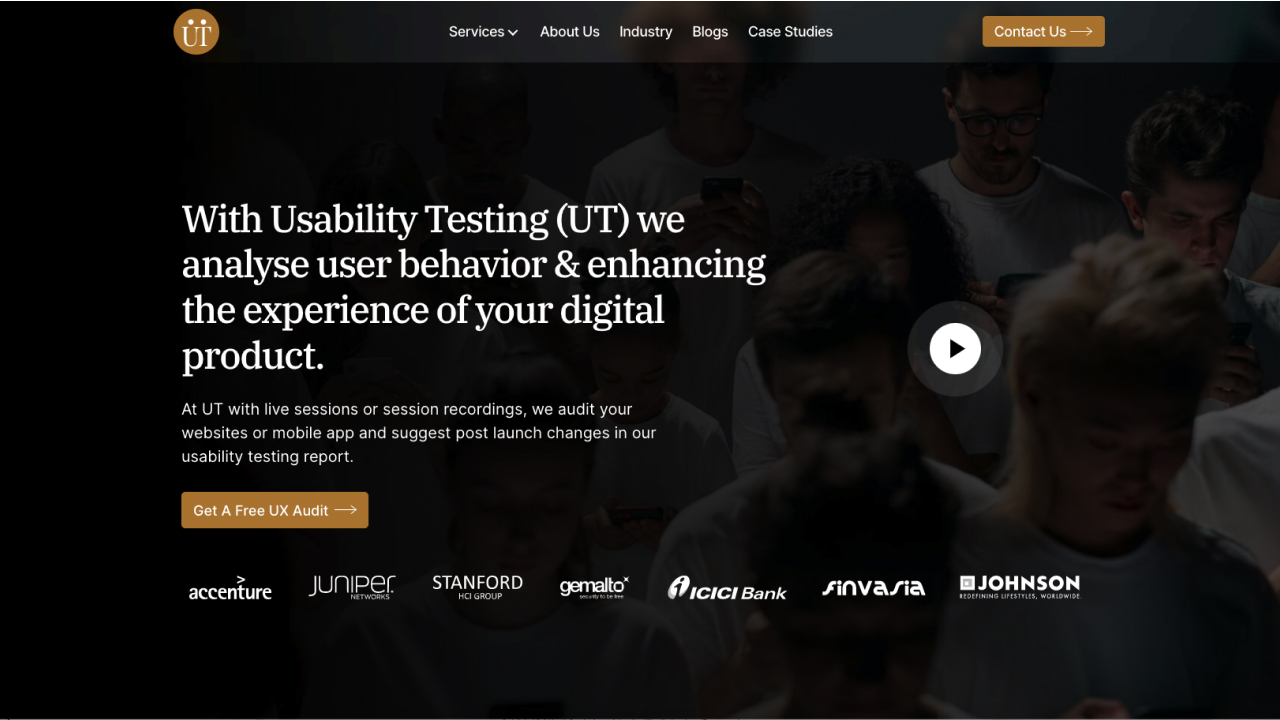
Late Adopters
People who are slow to adopt new technologies. They are generally more challenging to design because they distract more from poor interface usability.

Written by: Prince Pal
Your UI/UX Designer. Consultant. Partner. Over the past 18 years, I designed websites and apps for enterprise-level clients like Stanford-HCI Research, Accenture, Juniper Networks, Gemalto, Virtual Dental Care & much more.
A
- AB Testing
- Above The Fold
- Acceptance Criteria
- Accessibility
- Accordion
- Adaptive Design
- Adobe XD
- Advanced Prototype
- Affinity Diagram / Affinity Map
- Agile Software Development
- Aliasing / Anti-Aliasing
- Alignment
- ALT Text
- Analogous Colors
- Analytics
- Android App
- Angular
- Animation Design
- Anomalous Trichromats
- Anthropometry
- API
- Artificial Intelligence (AI)
- Ascender
- Assistive Technology
- Audit
- Augmented Reality (AR)
- Auto Complete
- Auto Correct
- Avatar
C
- Cache
- Call-To-Action
- Canonic Perspective
- Card Sorting
- Cascading Menus
- Cascading Style Sheets (CSS)
- Case Study
- Causation
- Charts
- Chatbot
- Checkbox
- Chromostereopsis
- Chunking
- Click Dummy
- Click Stream
- Cognitive Biases
- Cognitive Friction
- Cognitive Load
- Cognitive Processing
- Cognitive Walkthrough
- Color Palette
- Color Theory
- Color Wheel
- Combo Boxes
- Command Line Interface
- Commits
- Competitor Analysis
- Complementary Colors
- Concept Sketch
- Concept Sprint
- Consistency
- Content Design
- Content Management System (CMS)
- Content Strategy
- Context Effect
- Context Sensitive Popup Menu
- Contextual Inquiry
- Contrast
- Conversational Interface
- Conversion Rate
- Cookies
- Corporate Identity
- Correlation
- Counters
- Critique
- CRM (Customer Relationship Management)
- Cross Checking (Cross Validation)
- Customer Experience (CX)
- Customer-Centric
D
- Dark Pattern/Dark UX
- Dashboard
- Data Collection
- Data Science
- Data-Driven Design
- Date/Time Picker
- Decision Matrix
- Demographic
- Descender
- Design Deliverables
- Design Exercise
- Design Facilitation
- Design Patterns
- Design Sprint
- Design System
- Design Thinking
- Design Validation
- Design Verification
- Detailed Design
- Deuteranopia
- Developers
- Dialogue
- Diary Study
- Dichromats
- Direct User Data
- Disabled (Button / Control)
- Django Web Framework
- Docker
- Domain Expertise
- Döner Menu Icon
- Dot Voting
- Dribbble
- Drop-Down List Box
- Dropdown Buttons
- Dropdown/Dropdown Lists
E
- E2E Tests
- Early Adopters
- Early Prototype Testing
- Edge Case
- Efficiency
- Empathy
- Empathy Map
- End User
- Engagement
- Environmental Profile
- Ergonomics
- Error Analysis
- Error Detection
- Error Handling
- Error of Commission / Error of Omission
- Error Rate
- Ethical Design
- Ethnographic Study
- Ethnography
- Executive Champion
- Expectancy Test
- Experience Architecture
- Experience Design
- Explicit Save
- Eye Ball Tracking
I
- Iconography
- Ideation
- Image Map
- Inclusive Design
- Index Page
- Indirect User Data
- Industrial Design
- Infographics
- Information Architecture (IA)
- Informational Components
- Input Control
- Interaction Design (IxD)
- Interaction Designer
- Intuitive Design
- Inverted Pyramid Writing
- Invision Studio
- Ionic
- iOS App
- IP Address
- Irregular Shapes
- Iteration
- Iterative Design
- Iterative Testing
L
- Labels on website
- Landing Page
- Late Adopters
- Law of Common Region
- Law of Prägnanz
- Law of Proximity
- Law of Similarity
- Law of Uniform Connectedness
- Layout Graphic
- Leading
- Lean UX
- Learnability
- Legibility in design
- Likert Scale
- Line-height
- Line Length
- Linux
- Liquid Layout
- List Box
- Live Site Analysis
- Lo-Fi Prototypes
- Load Time
- Loader or Loading Bar
- Localization
- Logo
- Long Tail Keywords
- Look & Feel
- Luminance
P
- Padding
- Page Flow
- Page Types
- Pagination
- Pain-Points
- Pairing Designing
- Paper Prototype
- Paradox of Choice
- Paradox of Specificity
- Parkinson’s Law
- Pattern Recognition
- Peak-End Rule
- Persona
- Phi Phenomenon
- Pixel Density
- Pluralistic Walkthrough
- Practicality Test
- Preference Data
- Presentation Design
- Product Designer
- Product Management
- Product Roadmap
- Production Environment
- Progress Bar
- Progressive Disclosure
- Progressive Web Application (PWA)
- Prototype
- Proximity Principle
- Proxy PO
- Psychodynamics
- Psychographics
- Pull Request
- Python
R
- Radio Button
- Rapid Prototyping
- Rating Scales
- ReactNative
- Readability
- Reading Grade Level (RGL)
- Recall and Recognition
- Remote Usability Test
- Representative Sampling
- Requirements-gathering
- Research and Planning
- Resolution
- Responsive Web Design
- REST API
- Retention
- Retro
- Return On Investment (ROI)
- Reverse Card Sort
- Review
S
- SaaS
- Saccades
- Sans Serif
- Satisficing
- Saturated Color
- Scannability
- Scenario
- Schema (Pl. Schemata)
- Screen Readers
- Scrum Master and Scrum Artifacts
- SDK (Software Development Kit )
- Search Field
- Segments
- SEO
- Serial Position Effect
- Serif
- Service Design
- Sidebar
- Sitemap
- Sketch
- Slack
- Slider
- Small Field Tritanopia
- Software
- Source Code
- Spin Button
- Sprints
- Stakeholder Interviews
- Standards Design
- Statement of Work (SOW)
- Static Layout
- Storyboard
- Styleguide
- Summative Testing
- Survey
- SVG
- Switch or Toggle
- Symphony
U
- UI Design
- UI Element
- UI Kit
- Un-Moderated Usability Testing
- Unique Selling Proposition (USP)
- Unit Testing
- Usability Testing
- Use Case
- User Experience (UX)
- User Flow
- User Groups
- User Interface (UI)
- User Interview
- User Journey Map
- User Onboarding
- User Profile
- User Research
- User Satisfaction
- User Scenario
- User Stories
- User Testing
- User-Centered Design (UCD)
- UX Audit
- UX Documentation
- UX Portfolio
- UX Researcher
- UX Writing
- UX/UI Developer
What is Late Adopters?
Overview
People who are slow to adopt new technologies. They are generally more challenging to design because they distract more from poor interface usability.
Late Adopters are someone who starts using a new product, especially a new piece of technology, later than many other people: For a long time I didn't have a smartphone, being a late adopter.
Like the early majority(The early majority are interested in technology but want proof of its effectiveness.), the late majority want a data-driven reason to adopt the technology. This adoption segment requires research and solid evidence to convince people that the technology is worth their time.
The majority of late do not like to take risks, and they question the need for change. They are not easily persuaded by trends, instead preferring to see how changes occur before engaging in them. These are the people who snooze on software updates for as long as possible, waiting to hear how their peers react to the update.
UIUXshowcase.com — A curated home for designers and makers. No noise. Just the best tools, resources, and inspiration, all in one place.



